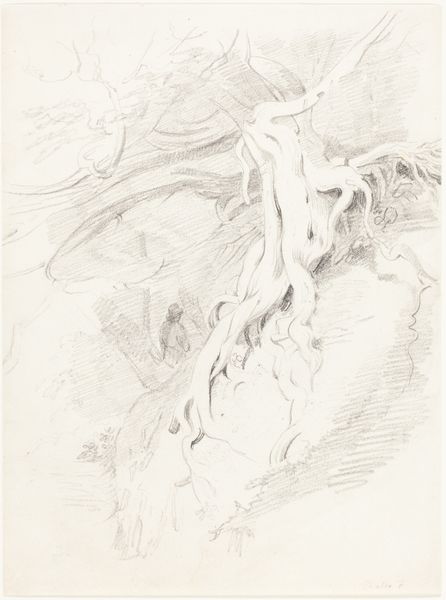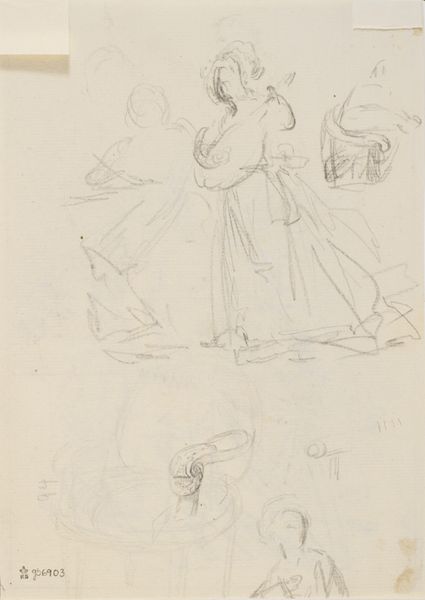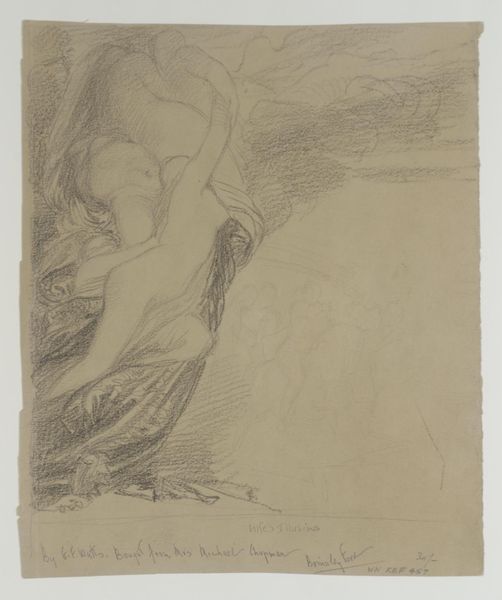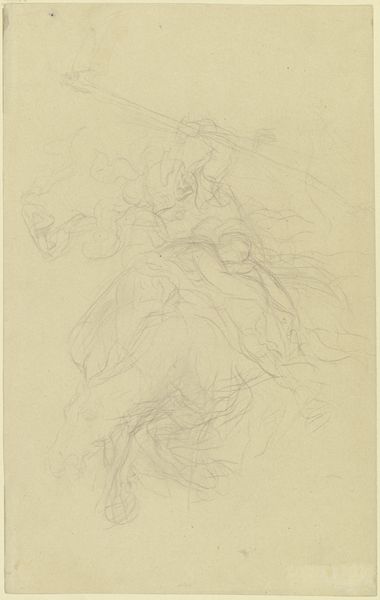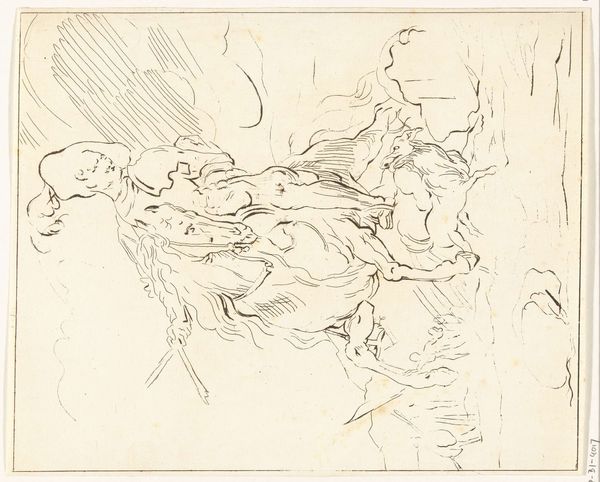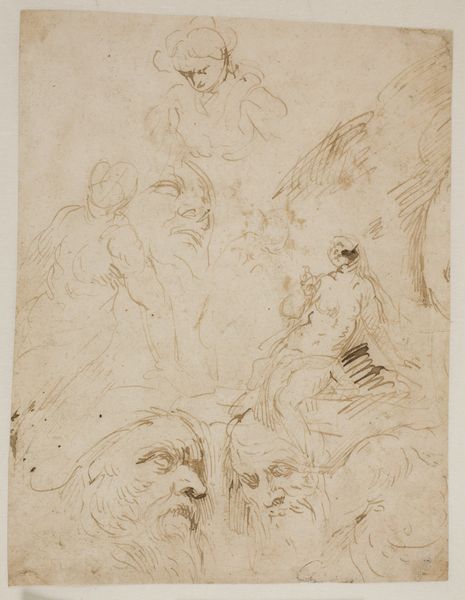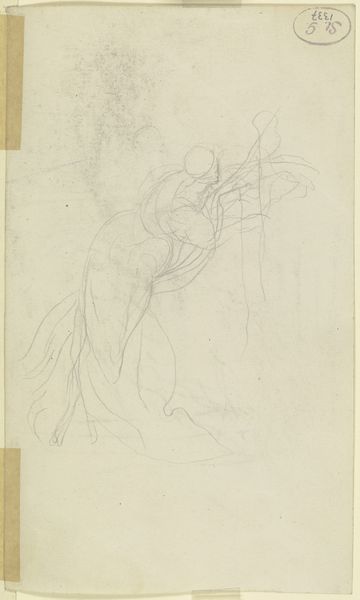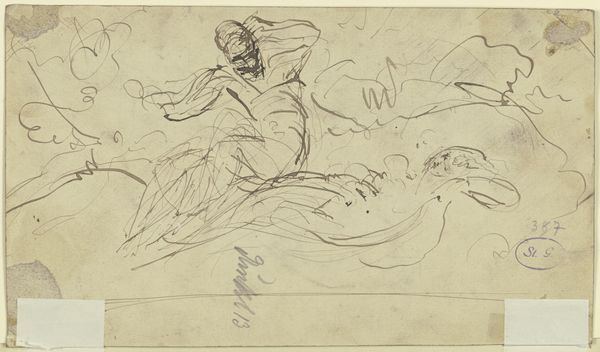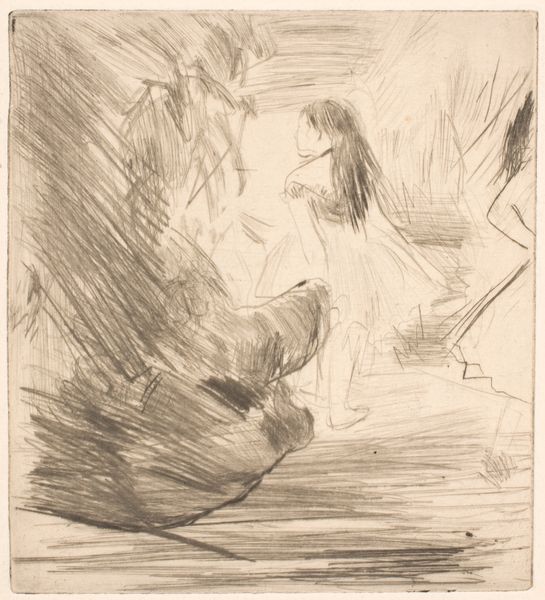
Copyright: National Gallery of Art: CC0 1.0
Editor: So, this etching is titled "The Road to Emmaus (second plate)," made by Jean-Louis Forain between 1902 and 1907. It has such a fleeting, ephemeral quality. How do you interpret this work? Curator: Forain captures the biblical story, but strips away its conventional grandeur. The road to Emmaus, a journey of recognition and revelation, is here rendered with uncertainty. What feelings does that evoke in you? Editor: Definitely a sense of unease, a quiet but palpable tension. I see the swirling lines above the figures, almost like a storm, but it could be an expressive element? Curator: Indeed! That "storm" is crucial. In iconography, light often represents divine presence, but Forain disrupts that expectation. He employs a flurry of lines which obscures rather than illuminates. The figures are shrouded, hinting at their incomplete understanding. Editor: So it’s not necessarily about divine clarity, but the struggle to comprehend? Curator: Precisely. Think of the historical context. Forain lived in a time of intense social and religious upheaval. Traditional symbols were being questioned. This etching, in its very ambiguity, speaks to that crisis of faith. Notice how Christ is not immediately identifiable? Editor: Yes, he’s almost blending in. It makes you wonder about the nature of belief itself. Curator: And consider, too, the psychological weight of recognition. These figures walked with Christ, not knowing who He was. Forain uses the lack of clear imagery to communicate not just what they saw, but what they *felt* during this encounter. Editor: I hadn't thought of it that way, but it makes so much sense! It’s less about seeing, more about feeling your way through belief. Thanks, that gave me so much to consider! Curator: It shows us that symbols don’t simply transmit information, but reflect our deepest cultural anxieties and hopes.
Comments
No comments
Be the first to comment and join the conversation on the ultimate creative platform.
